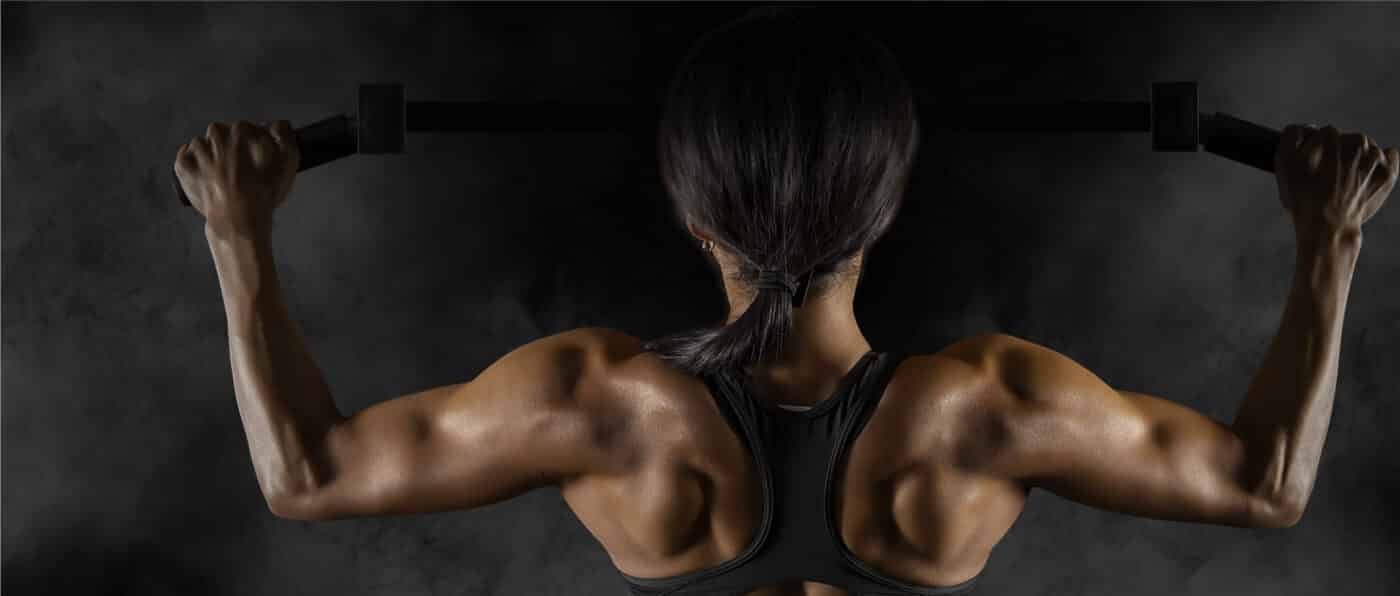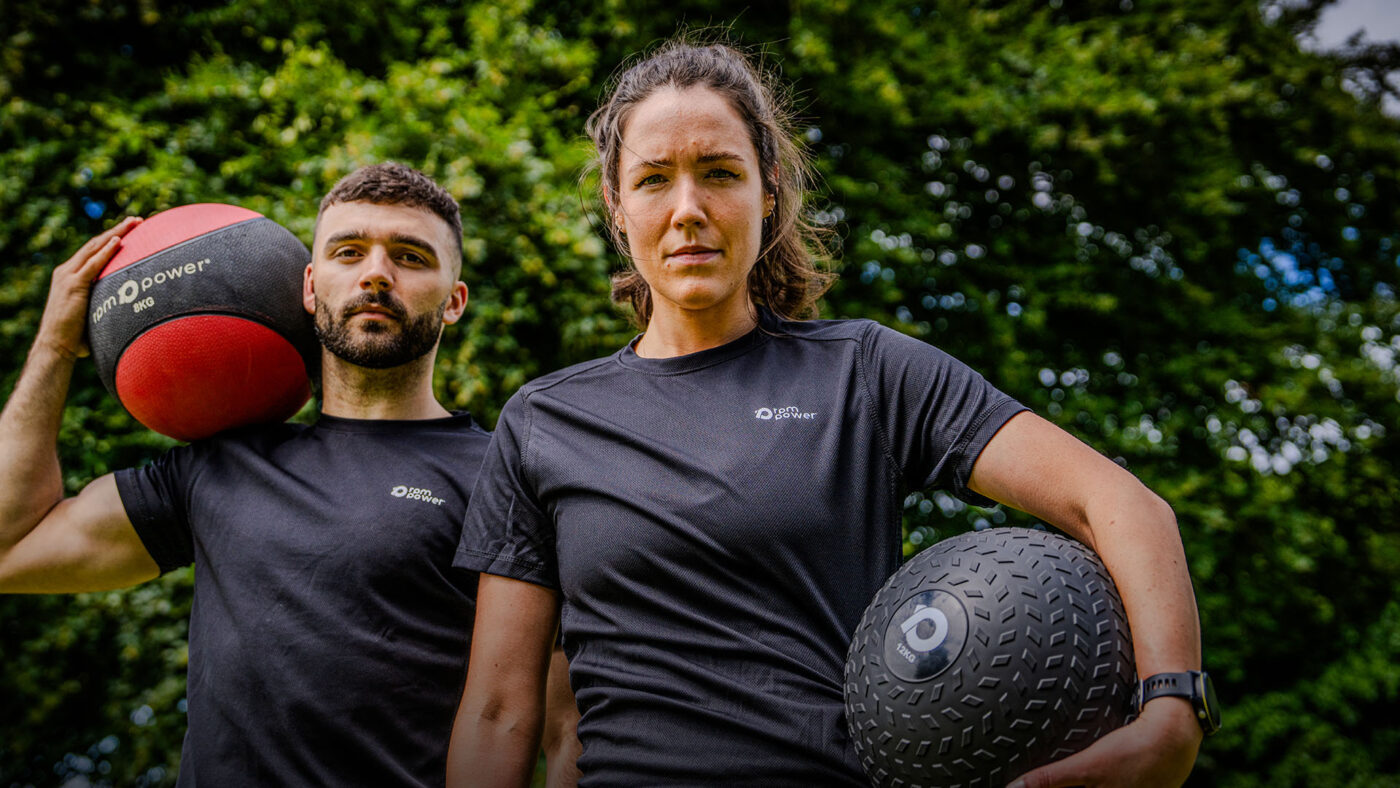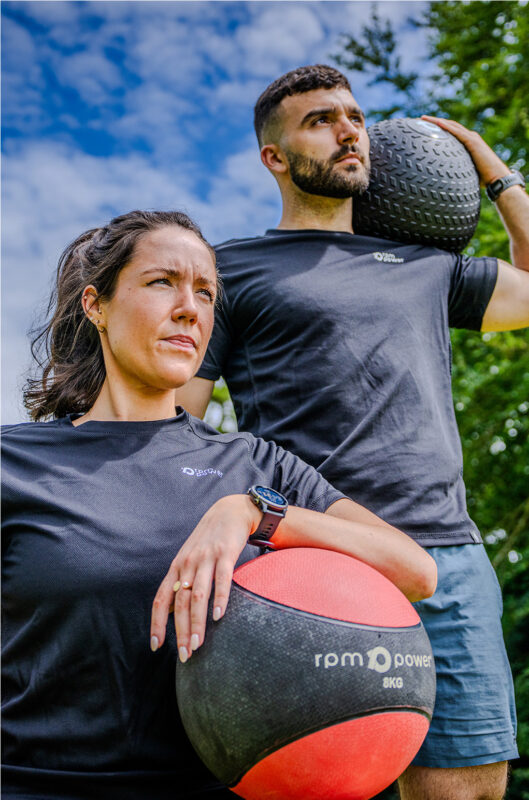Uncategorized
Pull Up 30 Day Plan ! Master Your First Pull-Up
In today’s guide, we set out a strategy to an exact plan on how to do a Pull-Up. Pull-ups are one of the most popular and long-established exercises of all time. They are a functional bodyweight exercise, which is fantastic for building upper-body strength and developing muscles in your back, shoulders, chest and arms. Although they are arguably the most well-known exercise in the world, they are hard-to-master and can be difficult for beginners to get a hang of.
Despite common misconceptions, it is possible for anyone – regardless of your level to master a chin up. You don’t need enormous arms or muscles, just some commitment to improve and learn the correct form and technique. Once you can perform pull-up variations (and eventually a full pull-up), you will reap the rewards of having a physically powerful upper body and progressively get stronger throughout time.
WHAT ARE PULL-UPS AND THERE BENEFITS
A pull-up is an upper body exercise which involves hanging from a bar by your hands , lifting your entire body up with your arm and back muscles until your chest touches the bar. Since the Pull-Up uses so many muscles at once, we can classify it as a compound exercise. When performing the movement, you should always focus on using your arms and shoulder muscles, attempting to avoid shrugging your shoulders upwards.
Pull-Ups primarily use your lats and biceps to bring your body upwards, and will focus on utilizing your entire upper body, including your abdominals, traps, deltoids and pecs, making it a fantastic exercise which includes several benefits.
What are some of these benefits?
Low-impact resistance – If you typically struggle to perform high-impact exercises because of sore joints or niggles and injuries, pull-ups are the exercise for you. Training chin ups will ensure you can progressively load the muscles, placing no additional strain on your joints, progressively allowing you to increase your strength the more you train.
Improve your physical health – According to Westcott (2012), resistance training is one of the best ways one can improve overall health. With connections being linked to overall physical performance, control of movement, and cognitive ability, performing exercises such as pull-ups is one way to ensure you can attain such benefits.
Toned Upper Body – Building muscle in your upper body can have the added affect of looking toned and sculpted. When you regularly train Pull-ups, expect to gain a great-looking upper body.
Why are Pull-ups so difficult?
Pull-ups are so difficult as they require you to lift your entire body with just your arms & shoulders. If you don’t have a lot of muscle here, it can be quite a challenge. With so many muscles required to perform this exercise – ensuring your form is correct is the most important thing to perform the exercise correctly.
Although there are many variations in chin ups as an exercise, the fundamental differences come down to pull ups & chin-ups. So what’s the difference? The major difference between pull-ups & chin-ups is that a pull-up involves an overhand grip (palms facing away), while chin-ups use an underhand grip (palms facing towards your body).
RPM Power Pull-Up Bars
Finding the right bar for you.
Before purchasing a pull-up bar, you will have to think about where you want to put it. Take all the necessary measurements and use them to pick out a product that works best for you. Luckily, here at RPM Power we have a wide range of Pull-Up Bars that are suitable for any home gym. See more information here.
stages in learning a pull-up
So now that we’ve defined what a pull-up is, we’ve got a five-point plan to gradually progress your pull-ups from zero to hero. With the stages we have laid out, we recommend moving up to a level when you can do 3 sets of 8 of a particular exercise. If you are in a hurry to get to that first pull-up or chin-up, 3 sets of 5 reps will also be sufficient, but this will vary with each exercise as we describe below.
Number of reps
For each of the below 5 exercises, we recommend a specific number of reps based on each exercises intensity. This will vary from person to person. However, a rough baseline of the reps of these exercises should be:
- 5-10 repetitions of each exercise
- Performing each exercise 5 or 6 days out of 7. This will involve taking a rest day one or two days between these days of exercise to allow your muscles to recover.
- If you feel as if you cannot reach the number of reps in one set, take a break and keep going until you reach that number. Even if it takes a couple of minutes break between each rep, the end goal will benefit significantly more.
LEVEL 1: BENT OVER DUMBBELL ROWS
Dumbbell Rows are the most basic of back exercises, and this exercise is fantastic in developing a similar “‘pull’ motion akin to a pull-up.
We recommend doing this exercise 6 days out of 7 for one week, adding it into your daily workout. A good benchmark is if you can do 8 reps of 10kg by 3 sets. This will vary depending on your body weight and your natural level of strength, so use this only as a recommendation.
Once you can do 3 sets of 8 reps with a dumbbell about 10kg or more, we recommend moving onto the next level. To perform this exercise, try the following:
- Standing upwards, hold a dumbbell in each of your hands, with your palms facing your body.
- Get into a position where your legs and arms are approximately shoulder-width apart and your knees bent
- Bend forwards no further than a 45-degree angle, tensing your core and keeping your back held up straight.
- Bring the weights upwards towards your core area, while doing so making sure that your wrists are tensed and your legs solitary.
- As you raise the dumbbells, it should feel you’re bringing your shoulder blades together at the top of the movement
- Lower the weights, you have now completed one rep.
(For more information on our dumbbells, click the button here.)
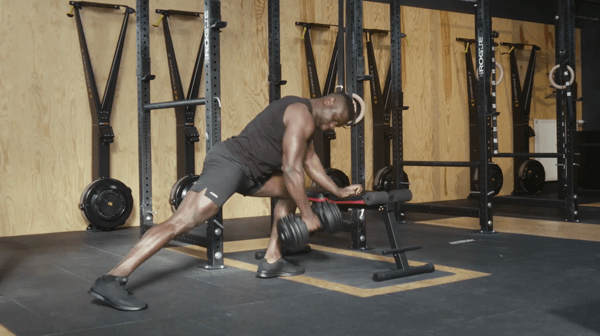
level 2: Australian pull-ups
Australian pull-ups, also known as body rows or incline rows, are a brilliant compound exercise to progress your pull-up ability. Australian pull-ups will work your forearms, core, biceps, traps & lats ensuring you are strengthening all the fundamental muscles required o do a pull-up, without the same total body weight strain.
We recommend doing 5-10 reps of this exercise x 3 sets. If you feel this is too easy, increase the number of reps. Alternatively, decrease the number of reps if it is too difficult, but make sure to get at least 5 in per set even if you have to take breaks between them.
Australian pull-ups can be done with Adjustable Pull-up bars, barbells or suspension trainers. It is important to have the correct form, so try the following:
- Have the bar at about waist height, sit beneath the bar and tense your core with your shoulders down and back.
- Lean back and keep your arms straight. Lift your hips so that your weight is supported by your heels and hands only.
- With your body properly aligned, bend your arms and pull your chest up to the bar.
- Slowly extend your elbow and return to the starting position.
(Australian Pull-Ups can be done with squat racks or specific pull-up bars. Luckily, we have the exact bar you need to do this exercise here.)
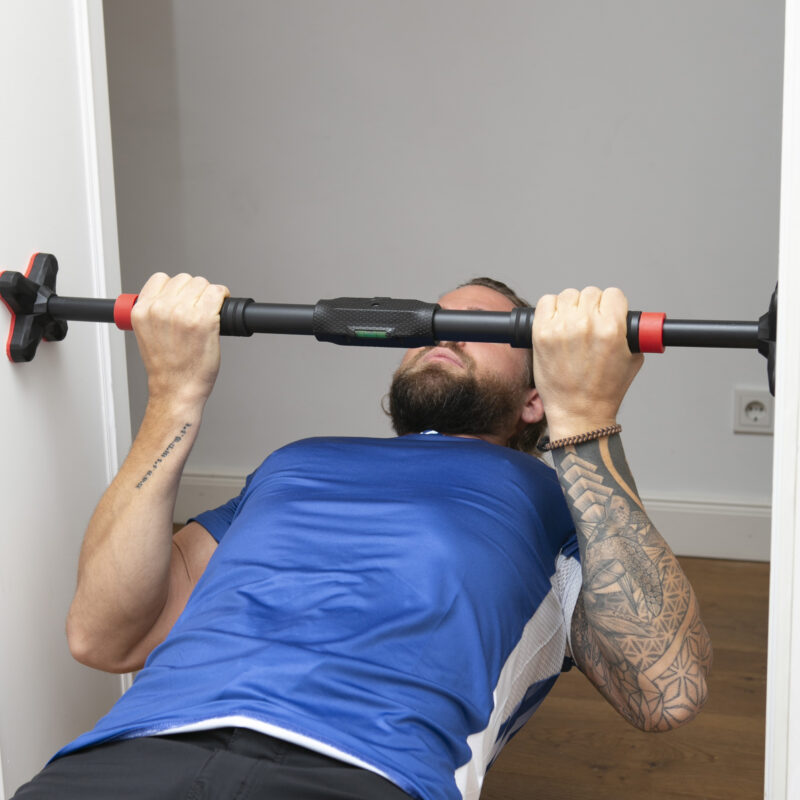
LEVEL 3: ASSISTED PULL-UPS
An assisted chin up is an exercise that helps you train chin up without the full body weight pressure of a standard pull up. Assisted pull ups can be done with resistance bands, specific machines, a chair, or someone else to help you. Here at RPM Power, we created Pull Up Bands specifically to deal with this issue. Our Pull Up Bands are ideal for slowly working your way up to standard pull-ups.
Ideally, you should be able to perform 5-10 reps x 3 sets for this exercise. Perform this exercise daily for 6 days in a row to build up the resistance before getting to the next stage of the progression.
To do this exercise, firstly:
- Loop the appropriately sized resistance band around the pull-up bar to create a loop large enough for you to fit your knees into.
- Step into the band, with one of your feet in the middle of the band, with your other foot anchoring the band.
- Grab the pull-up bar with an overhand grip. Begin the exercise by starting the upwards movement by pulling your shoulder blades down and pulling your elbows towards your body, letting the band to assist your pull.
- Pull your shoulder blades toward your spine and squeeze your upper back and lat muscles until your collar bone is in alignment with the top of the bar.
- Begin the downward movement by simultaneously straightening your arms to complete one rep.
(The bands needed to perform assisted pull-ups are a specific type of resistance band which can be found here.)
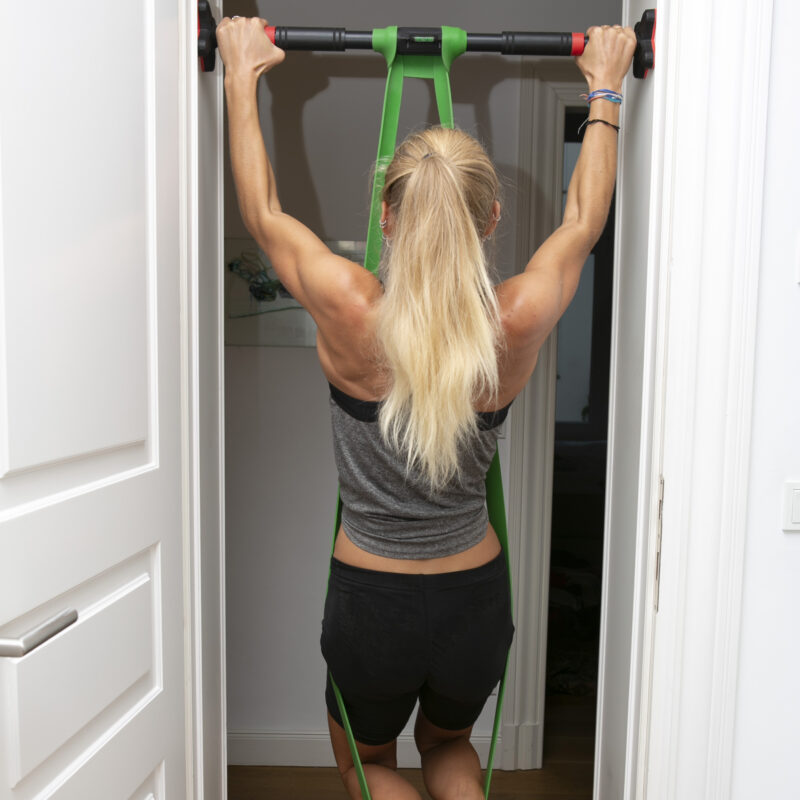
LEVEL 4: BAR HANGS
Now that you’ve been working away on your pulling muscles and assisted variations, it’s time to move onto top hangs and bar hangs. Firstly, a top hang is exactly what is sounds like. We hold the top position of the pull-up for 5 – 10 seconds. The benefit of a top-hang is that you’ll train your upper body muscles to become used to holding your entire body weight with ease.
You should aim to perform this exercise daily for 3 sets of 5-10 second holds x 3/4 sets to see improvements in the muscles required to do this exercise.
To perform a bar hang:
- Grab the bar with your palms facing away or towards you.
- Shift your weight from your feet onto your arms until you are hanging unassisted.
- To increase difficulty, work on retracting your shoulders downwards away from your ears.
- You can work on building the time of these hangs from a couple of seconds to 30.
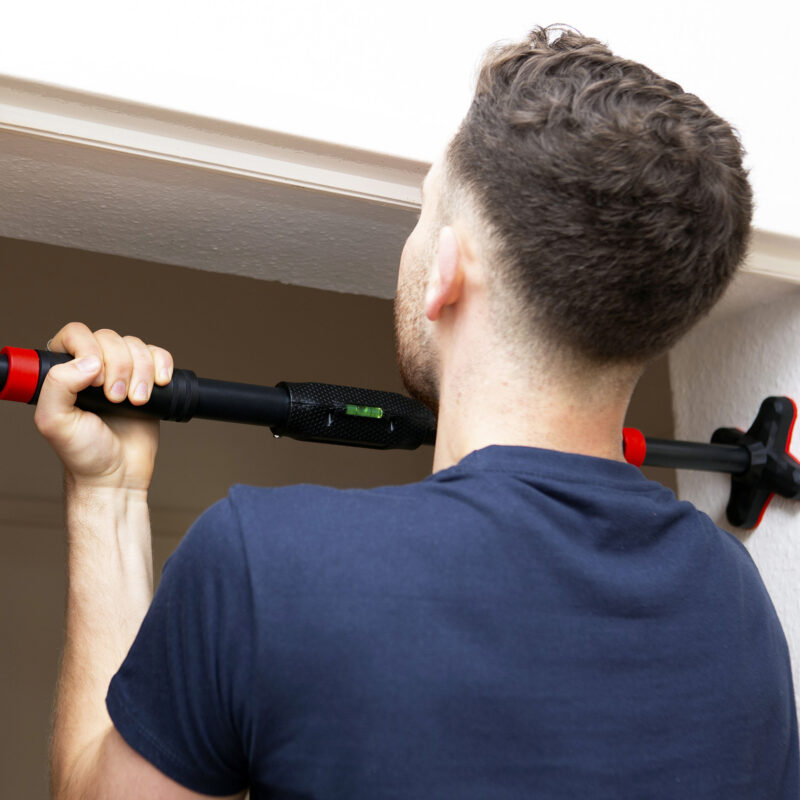
LEVEL 5: PULL-UPS
If you’ve made it this far, congrats, you are now ready to perform your first pull up!
Take your time performing this exercise. If you feel you haven’t the level of strength required yet, take another 6-7 days of the previous exercises combined together to get to this level.
You goal here should be to get 1-3 reps of a pull up with your head going above the bar. Form is the most important attribute here, so assuring you can complete a full pull up is what we are looking for.
To begin:
- Start by positioning yourself below your pull-up bar. Place your hands in an overhand grip, with your hands a little more than shoulder-width apart.
- Take a deep breath, lift your feet from the floor or box you hang from. Tense your core and pull your shoulders backwards and downwards.
- Engage the muscles in your arms and back, all the while bending your elbows and raise your upper body upwards towards the bar until your chin it over the bar.
- In this position, you should be able to imagine bringing your elbows towards your hips, avoiding swinging your legs around or shrugging your shoulders upwards.
- At the top of this movement, take a deep inhale. Then extend your elbows and lower your body back to a starting position.
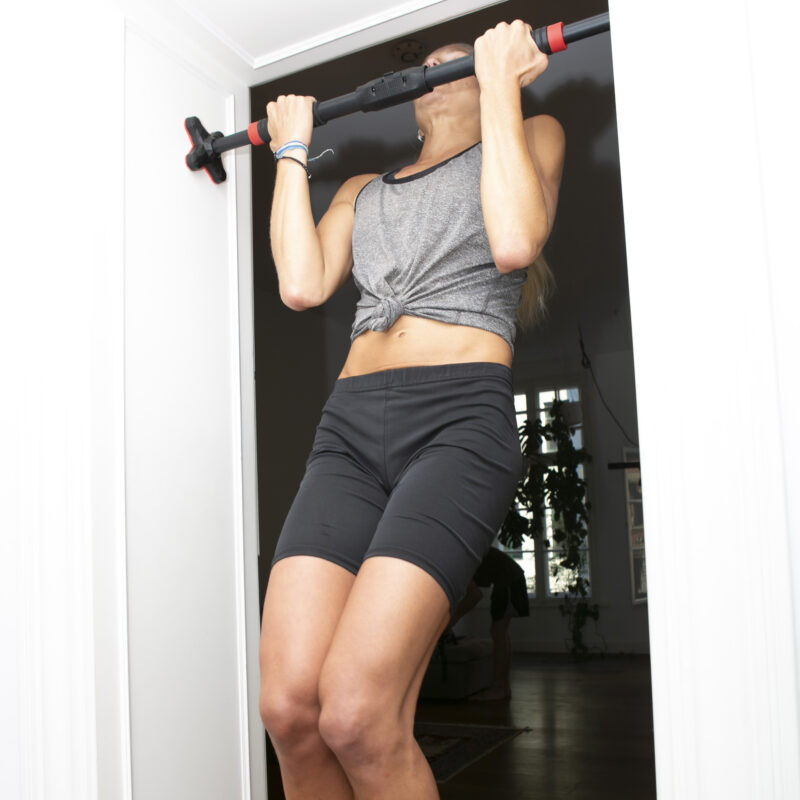
CONCLUSION
If you’ve made it this far, you are ready to take your pull-up game to the next level and start progressing with more advanced exercises. Due to the nature of this challenge, and since everyone is different, there is no one-size-fits-all program for each individual.
Listen to your body and take more time to complete the challenge if you feel that it is essential.
For more information on the RPM Power Pull-Up Bar range, click the button here.


